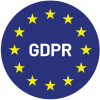Understanding modern customer lifestyles—fast-paced, volatile, and open to new experiences—is crucial to marketing strategy success. Our dependency on mobile devices, technology, and instantaneous communications has led to the emergence of innovative platforms like podcasting, Zoom conferencing, and powerful social media channels. Marketers who grasp the significance of these changes are best equipped to maintain their competitive advantage.
The goal of every business strategy with a marketplace focus is to deliver a competitively compelling customer experience (CX). The latter consolidates brand loyalty in a dynamic environment swayed by the tussle between an accelerating e-commerce revolution and traditional brick-and-mortar shopping. As a result, it’s apparent that behavioral and psychographic influences are the most crucial drivers of customer preferences. Why? Emotions and complex thought processes are front and center of developing a value proposition that covers all the vital touchpoints of the customer’s journey.
Two crucial metric exercises jump to the forefront—Customer Effort Score (CES) and Consumer Sentiment Analysis—creating insights that can jet-propel your efforts in the face of progressively intensifying competition. Read on to learn how these two integrated concepts combine to give you a significant edge.
How do you calculate customer effort score (CES) and what is it?
CES measures customers’ engagement with a company, its brands, products, and services. It reflects how easily customers resolve sticky or obstructive company interactions in their journey to a buying action (and beyond). The metric frequently focuses on one touchpoint at a time rather than an all-encompassing analysis of all of them.
There are many ways to set up a Customer Effort Score question, although most all utilize a rating scale similar to Likert Scale surveys. While some question styles simply ask about how easy it was to perform a specific action (either with an ease or agreement scale), the Sogolytics approach puts the onus on the company, as in the example below:

Without diving too deeply into this topic (we’ve done that elsewhere!) consider that the customer is asked to rate a touchpoint on ease or difficulty as a CX energizer.
You can design your CES questions/statements to cover a broad range of CX touchpoints, from reading instructions to support agent conversations, navigating the website, salesperson interaction, product or dashboard usability, delivery wait times, competitive pricing, and more.
Once the feedback streams through, the scene is set to calculate the customer effort score. How? The researchers add the scores and divide the bottom line by the number of respondents. For example, in company Z, 100 respondents provided an 800-CES total by adding each “one-to-ten” rating. Divide that number by 100, thus generating a CES of 8.
What’s a good or bad score?
- Anything from 5.1 to ten indicates customers interact on the engaging side with the company.
- A 4.9 CES or lower signifies the opposite (i.e., a strained relationship).
- The most perplexing ratings are net scores hovering around a neutral five rating experience.
Here’s the thing: Even a CES of 6 indicates that up to 40% of customers register less-than-satisfactory experiences, which can be a concern. From another angle, one of the best ways to use the CES metric is to review improvement or deterioration in critical touchpoints over time.
For example, online or direct phone customer support may be pivotal in smoothing the customer journey in increasingly service-oriented marketplaces (before and after purchase). Any slippage in support agent training, demeanor, technical know-how, and ability to connect empathetically to customer queries can adversely impact customer effort scores. So monitoring this dynamic is a must, and failure to address emerging deficiencies can lead to accelerated customer churn, sometimes pushing even long-term brand loyalists to jump ship (see below).
The advantages of CES and its limitations
Customer Effort Score Advantages
Many articles by Sogolytics deal with customer journey mapping and staying in touch with CX from beginning to end (i.e., the entire customer lifecycle). The principle behind this thinking is that successful brand strategies rely on customers moving smoothly between touchpoints, from the day the product idea enters their minds to after-sale usage. On the other hand, disruptive touchpoints derail customer journeys midway or bring them to a screeching halt. With this as a backdrop:
- CES surveys that scan the CX landscape highlight the robust or obstructive touchpoints that bolster or constrain brand strategies.
- In particular, marketers can earmark poor CES-rated touchpoints for severe revision or eliminate them.
- Constructive follow-up shortens customer journeys as much as possible, leaving less room for error.
The immediate takeaway from a CES survey covering controllable touchpoints is an insight into market presentation gaps, CX disruptions, undesirably long stops in the customer journey, wasted budget investments, and some insights into relative competitiveness. In short, CES quantifies critical variables, indicating whether or not it’s a trouble-shooting target.
Customer Effort Score Limitations
I highlighted above that CES surveys are frequently narrow research initiatives, covering individual touchpoints, not the entire CX. As a result, the derived scores do not necessarily indicate overall customer satisfaction or dissatisfaction. For example:
- A high CES score related to salesperson friendliness may not offset severe unhappiness with pricing or after-sales service (especially when the disruptive touchpoints never entered the survey).
- Conversely, a low CES-scoring touchpoint may not be significant enough to upset sustained customer loyalty.
Moreover, it falls short of providing insights into the detailed sentiments behind the CES ratings. For example, we may know many customers express dissatisfaction with technical support, but we don’t see the level of frustration behind the score.
We must also determine why there’s upset in the first place, from a mind-boggling line-up of causes, such as rudeness, inadequate knowledge, long wait times, etc. So, we introduce sentiment analysis to give CES surveys substance.
What is customer or consumer sentiment analysis?
CES is only one leg of Customer Effort and Sentiment Analysis. The latter part is the science of deriving insights into customers’ thoughts and emotions connected to CES touchpoints. In short, it uses conversation analytics software, qualitative surveys, and harnessing machine learning to open the arena behind the quantitative metrics.
Why is it a crucial aspect of a compelling marketing strategy?
Consider the following from a comprehensive international marketplace report and other reliable sources:
- Only 30% of the 125 independent companies surveyed match customers’ expectations.
- More than 80% of consumers are ready to pay more for an improved customer experience.
- Around 80% of consumers are at risk of moving to a competitor after only two lousy company experiences.
- 65% of customers switched brands after only one disappointing brand experience. (Khoros)
- According to Ruby Newell-Legner’s “Understanding Customers,” if the company stays with the brand after a negative experience, the record is only set straight 12 positive customer experiences later.
- Companies making an error in their CX appeal will retain 78% of their customers only if the overall service is excellent (Salesforce Research).
- Attracting new customers costs 500 to 2,500 percent more than retaining existing ones. (Invesp).
- 83% of customers stay loyal to brands that respond to their complaints. (Khoros)
- Businesses that put their customers’ touchpoints first, second, and last can expect a 4 to 8% growth premium versus competitors in the same marketplace. (Bain & Company)
With so much at stake, we must recognize that customer sentiment insight creates a transformative bridge between customer retention and short-term customer lifecycles. Management must hear from customers in their own words, observe body language, and interpret reactions to inject engagement into their strategies. There’s no discussion more critical than counteracting problematic touchpoints before they gain traction and spread to other parts of the organization.
There are two primary resources in this arena:
1. ML- and AI-driven tools dedicated to customer sentiment analysis
Customer sentiment software, such as Natural Language Processing (NLP) or Natural Language Understanding (NLU), delivers insights into a previously overwhelming field of complex touchpoints. These automated AI-driven systems zone in on pivotal motivational drivers, pulling data from every customer/brand interaction, processing it in a fraction of human time, and recommending innovative reactions.
Customer sentiment analytics software is the ticket to accumulating and collating sentiment data. It’s possible to do this in one centralized location with sophisticated tools covering multiple customer touchpoints, such as calls, chats, emails, agent contacts, and more—a wealth of data ripe for mining. It transforms social media comments and third-party reviews into customer data to generate accurate sentiment scores embedded in the software results.
Keep in mind: Sentiment technologies are evolving daily.
SaaS innovations and Apps cover every aspect of consumer participation via emailing, social media navigation, survey responses, phone-ins, chatbots, recorded calls, and more. Here are some examples:
- SogoCX from Sogolytics reflects many of the attributes highlighted under the other options. Also, its algorithms automatically analyze sentiment using advanced NLP text analysis, recommending insightful changes based on what your customers are really saying.
- Lexalytics (Salience 6) – A multilingual text analysis engine that looks for emotions hidden in written words.
- Brandwatch (owned by Cision)
offers social media monitoring tools that analyze consumer brand reviews and other entries (yours and competitors), interpreting the feelings behind words or videos. - QuestionPro has long been a go-to choice for many businesses, taking advantage of its sophisticated (NLP) algorithms capable of multi-channel data collection, sentiment categorization, and integration with other platforms one might already be using.
- Social Mention is an excellent starter tool for its simplicity, affordability, and fundamental sentiment analysis capabilities, which make it a stepping stone toward more sophisticated options.
The tools recommended above and others (such as AskNicely, Qualaroo, and Podium) contain unique features that marketing strategists should review before finally structuring an analytical customer suite primed to read sentiments in their customized channels.
2. Qualitative data from traditional surveys
CES is a sentiment springboard even at the score level. Why? Any negative CES signifies emotional upset related to focused brand interactions, although the insight depth is in question. A quantitative rating more than scratches the surface but requires qualitative probing to penetrate the core of discontent.
Follow-up questions like, “Why did you score question 3 the way you did?” invite respondents to divulge more, providing insights into feelings, thoughts, disappointments, and accolades behind the score they entered. Indeed, qualitative data is a fundamental ingredient of consumer sentiment analysis, adding layers to the emerging scores.
Customer Effort and Sentiment Analysis Benefits
If your team members believe in the CX concept and modern theories around touchpoint cleansing, the content above should be music to their ears. It advocates an approach that:
- Covers customers at every twist and turn in their journey to the cash till (and beyond).
- Enables deep motivational evaluation so your brand can stay ahead of the competition with meaningful differences.
- Jettisons or minimizes obstructive touchpoints and establishes a platform for innovating the ones behind robust customer engagement.
That’s only half of the story. Here are some other exceptional benefits to convince you that a CES-centric resource pool in modern market environments is indispensable:
- Customer sentiment analytics doubles up to train your employees so they can:
- Harness the power of AI and ML machine learning to handle customer issues and complaints seamlessly.
- Track and monitor customer sentiment in real-time, making touchpoint adjustments fast and decisively before severe problems creep into the CX.
- Predict upcoming trends and anticipate negativity before they occur (e.g., customer kickback with dashboard revisions).
- Paint an emotional/cognitive customer profile, making brand connections more genuine and sincere.
- Customer retention and robust analytics go together like salt and pepper.
- Customer loyalty begins with engaging CX touchpoints and consolidates as they repeat and multiply.
- The statistics provided above reflect that emotionally connected customers buy more and are more tolerant of price increases.
- Every call-in—mainly when driven by negative sentiment—is an opportunity to convert the caller from a “detractor” into a brand ambassador by addressing sentiments with a compelling message.
- This dual strategy includes accumulating prospects through positive word of mouth.
Conclusion – A survey response case study and FAQs
Case Study
Firstsource is a multibillion-dollar global telecommunications and mass media conglomerate stationed in the US. It represents 28 million subscribing customers wanting to improve the experience of multi-service customers across its broadband, television, telephone, and wireless phone services. They understood that emotional touchpoints drove their customer relationships, and identifying CX gaps was a priority to improve profitability.
Firstsource deployed FirstCustomer Intelligence (FCI) to measure customer sentiment, emotions, and behaviors using unique text analytics across 70,000 chats. The initial goal was to identify the key reasons customers call customer service. It ultimately transformed into a micro-analysis looking for small shifts that resulted in massive rewards. How?
- Of all the calls, 6% revolved around subscribers seeking information on TV streaming, subscription service suspension, an absence of porting trackers on client websites, an inability to detect the password reset slot, and some specific app inquiries.
- They detected a significant frustration in these inquiries with unduly long resolution times.
-
Firstsource developed an AI-assisted timeframe system and other technological adjustments to address all these issues quickly, with seamless automation, prominent visibility, and resolutions without calling in. As a result, the company achieved a 6% call avoidance, aligning with a 64 to 84 percent customer satisfaction improvement.
Although Sogolytics wasn’t the professional resource in the case study above, we have many options that parallel it. So, if you want corner-to-corner survey structuring and uplifted survey response rates that never falter, connect with our team for a personalized demo of Sogolytics’ capabilities in this vital arena.
FAQs
Q1: What is Customer Effort Score (CES)?
A: CES measures customers’ engagement intensity with a company, its brands, products, and services. It measures how easily customers resolve sticky or obstructive touchpoints in their journey to a buying action (and beyond). The metric frequently focuses on one touchpoint at a time rather than an all-encompassing overview of every touchpoint.
Q2: What is sentiment analysis?
A: The science of deriving insights into customers’ thoughts and emotions connected to CES touchpoints.
Q3: How does sentiment analysis relate to customer effort?
A: CES surveys fall short of providing insights into the detailed sentiments behind the CES ratings. To give substance to CES surveys, we must introduce sentiment analysis.
Q4: Why are CES and sentiment analysis important for businesses?
A: It advocates an approach that connects you to your customers at every twist and turn in their journey to the cash till (and beyond). Moreover, it takes you into deep motivational evaluation so your brand can stay ahead of the competition with meaningful differences. Critically, it jettisons obstructive touchpoints and generates a platform for innovating the ones behind robust customer engagement.
Q5: What are some challenges of measuring and analyzing CES and sentiment?
A: Motivating your team to accept the approach and selecting the right software tools.














